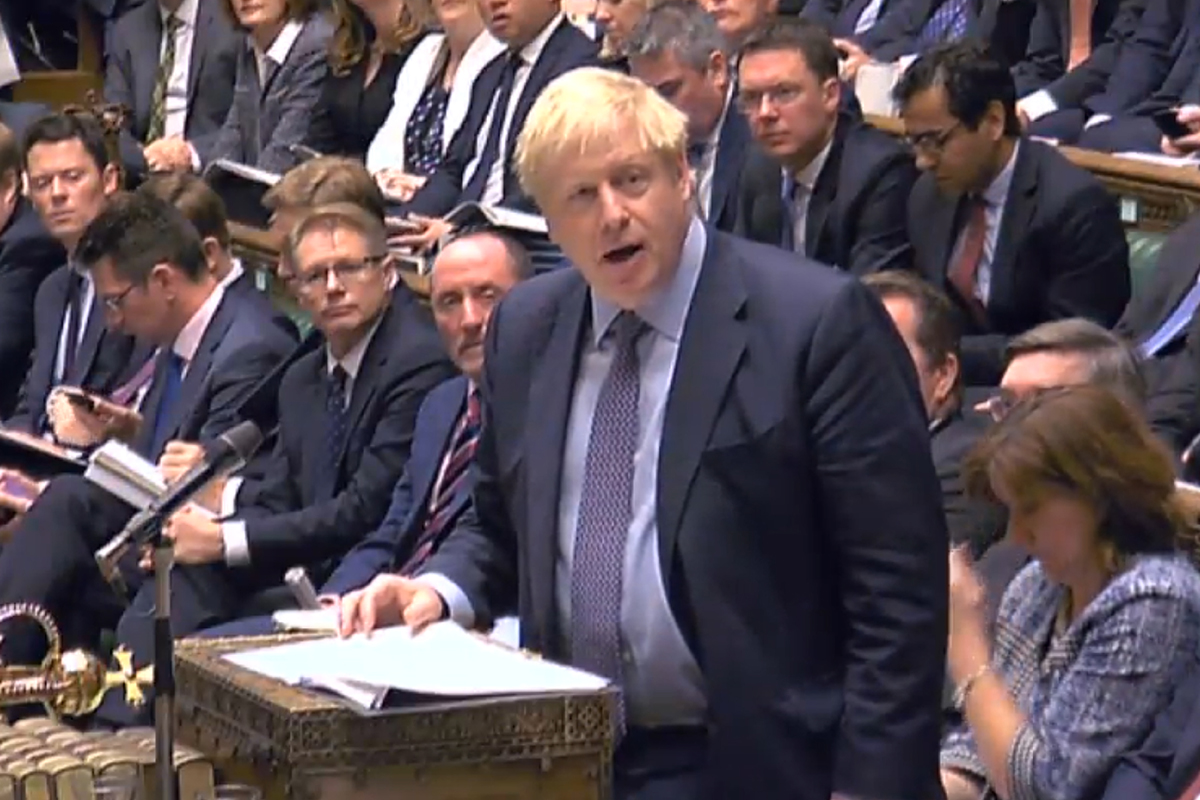EU leaders agree for new sanctions on Iran
European Union leaders agreed late on Wednesday on new sanctions targeting Iran for the direct attack on Israel.
His cut-throat competition model complicates negotiations towards a level-playing field.

A video grab from footage broadcast by the UK Parliament's Parliamentary Recording Unit (PRU) shows Britain's Prime Minister Boris Johnson making a statement in the House of Commons in London on October 19, 2019. British MPs gather Saturday for a historic vote on Prime Minister Boris Johnson's Brexit deal, a decision that could see the UK leave the EU this month or plunge the country into fresh uncertainty. (AFP / PRU)
Mr Boris Johnson is at the crossroads. Rightly has Thursday’s “great new deal” been described as a “dash for a deal”. With less than a fortnight to go for the United Kingdom’s scheduled exit from the European Union, the crucial question whether the Prime Minister has triumphed still remains open to question. Not the least because he can scarcely be sure of parliamentary approval and the concurrence of Brussels.
The immediate response of the EU President, Jean Claude-Juncker ~ “a fair and balanced agreement” ~ would suggest that the headquarters will very probably give its nod. Indeed, the 31st of October is the third deadline this year… 29 March followed by 12 April. The successive extensions have served to make confusion worse confounded amidst the legislative wrangling and the resignation of Mrs Theresa May. The crisis, specifically over Northern Ireland and the Customs Union, may yet persist. Since the referendum on 23 June 2016, it has been a rollercoaster narrative, punctuated with political bungling. The time factor has been crucial; yet time, the “old gypsy man”, as historian Percival Spear had once described it, will not wait.
Indeed, time has been squandered with consistent essays towards a no-deal and the flirtation with core supporters. Essentially, these were political games over an issue that has a wafer-thin margin of approval, in terms of popular support. In the net, the Conservative Party is today a direly fractious entity. Mr Johnson’s political bungling is now reaffirmed with his anxiety to strike a last-minute deal in Brussels. The British Prime Minister is a Eurosceptic in the tradition that vilifies Europe as the origin of red tape that suffocates enterprise. For Tories who share that perception, the very purpose of Brexit is liberation from the regulations imposed by “Brussels bureaucrats”.
Advertisement
Opposition to the backstop is rooted in the anxiety to extricate the economy of the UK from social protections preferred by many European countries. The theory is that a competitive edge is achieved by reducing the cost of doing business in Britain. In practice, that involves cutting labour protections, lowering environmental standards and what have been called “depressing wages”. The Prime Minister’s plan of action implies a different future relationship with the EU from the one prescribed by Mrs May. The similarity of political constraints on the two Tory leaders, specifically the strain of managing a minority government, has created a false impression that their Brexit deals are alike.
But Mr Johnson’s approach flies in the face of frictionless trade. It sacrifices access to EU markets at the altar of deregulation. His cut-throat competition model complicates negotiations towards a level-playing field. Which introduces fresh hurdles for a free-trade agreement with Brussels post-Brexit. It erects costly new barriers, not just with Ireland but at every port in the UK. Mr Johnson is as yet not sure if he will have the numbers in the House of Commons to get what he calls the “great new deal” through.
Advertisement